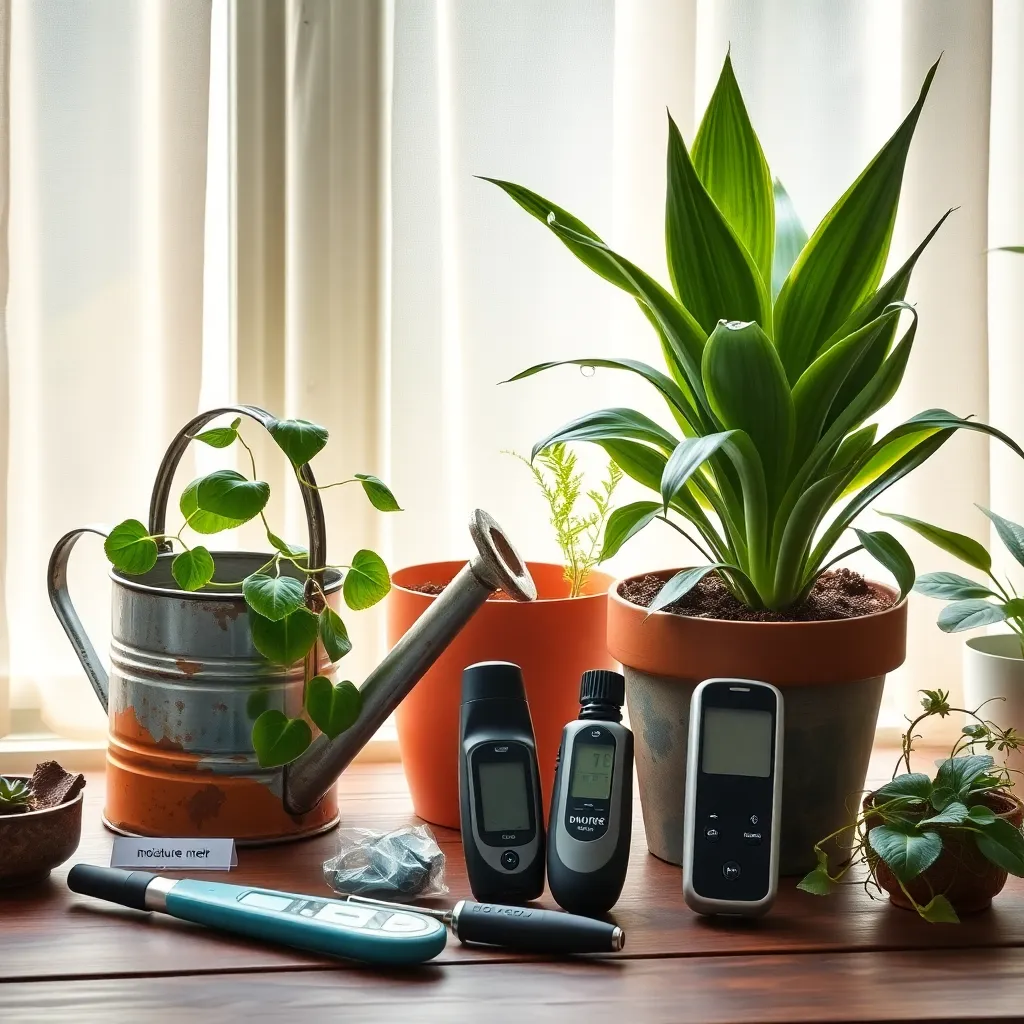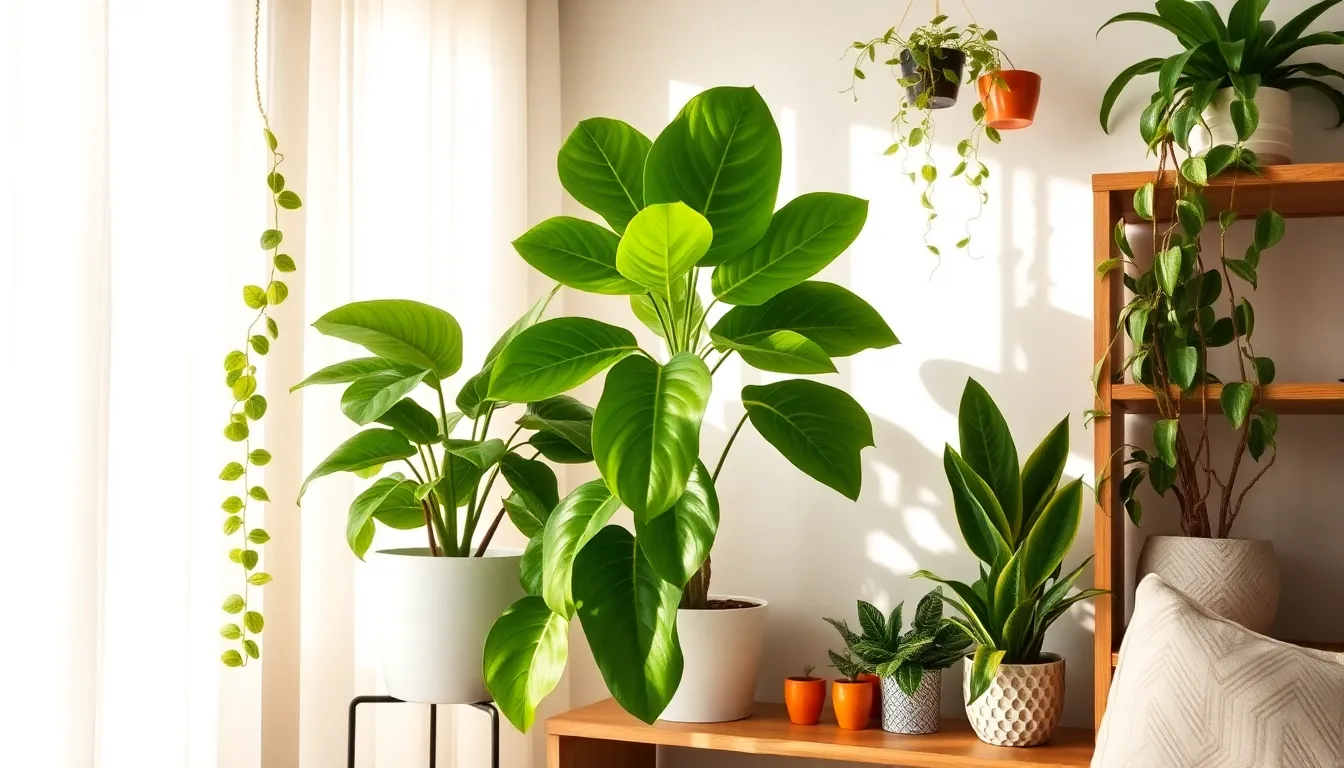Welcoming houseplants into your home is like inviting a breath of fresh air that brightens your space and lifts your spirits. Whether you’re nurturing your very first pothos or adding to an ever-growing indoor jungle, having the right tools can transform your plant care routine from daunting to delightful.
For those just beginning their green-thumb journey, learning which tools to invest in can be a game-changer, saving you time and effort while boosting your confidence. Seasoned plant enthusiasts will agree that the right gear not only makes plant care more efficient but also enriches the rewarding experience of watching your indoor garden thrive.
In this article, we’ll explore nine essential tools that every plant parent should have in their arsenal. From precision watering cans to nifty soil moisture meters, you’ll discover how the right equipment can make all the difference in fostering a healthy, happy indoor garden.
Choosing the Perfect Watering Can
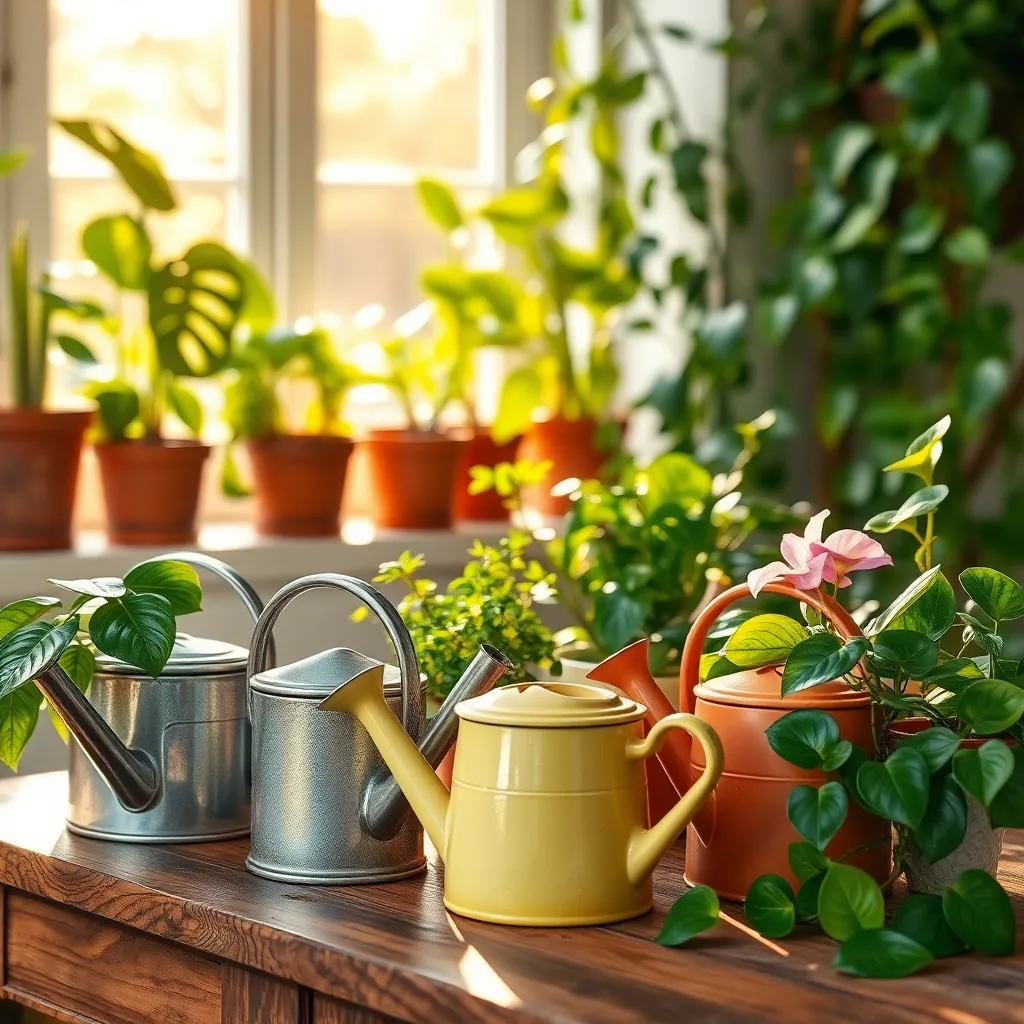
Choosing the right watering can is essential for maintaining healthy houseplants. Look for a can with a long spout, as this allows you to reach the soil directly without wetting the leaves, which can lead to fungal diseases.
Material matters when selecting your watering can. Plastic cans are lightweight and durable, while metal options are sturdier but can be heavier, so choose based on your comfort and the number of plants you have.
Consider the size of your watering can, especially if you have a large collection of houseplants. A larger can means fewer trips, but ensure it’s not too heavy when filled, as this could make watering cumbersome.
Advanced gardeners might appreciate a watering can with interchangeable nozzles. Nozzles that offer different spray patterns provide flexibility, allowing you to tailor the water flow to meet the specific needs of different plants.
Precision with Pruning Shears
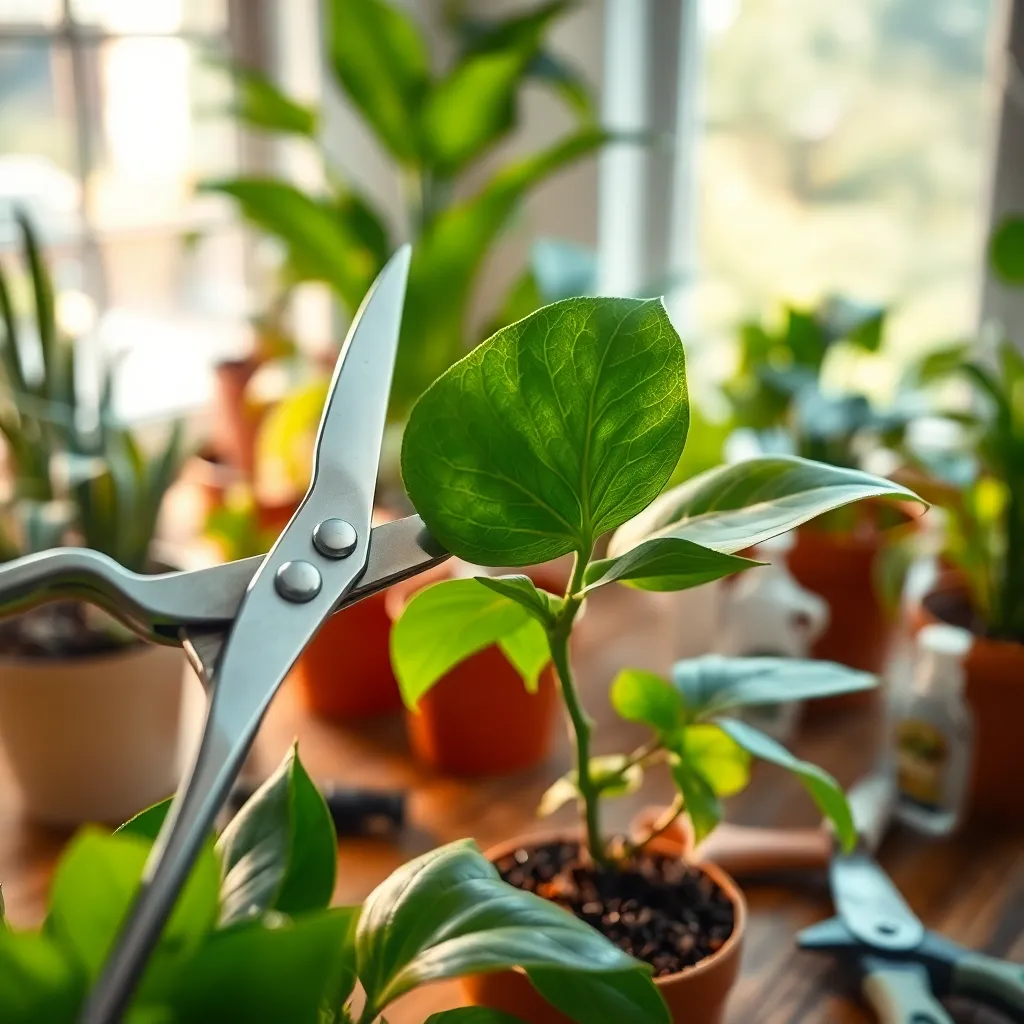
Pruning shears are indispensable tools for maintaining the health and appearance of your houseplants. With the right pair, you can easily remove dead or diseased leaves, encouraging new growth and keeping your plants vibrant.
Begin by selecting a pair of pruning shears that fit comfortably in your hand and are suitable for the size of your plants. For most houseplants, a small, sharp pair is ideal for making precise cuts without damaging surrounding foliage.
Timing is crucial when it comes to pruning your plants. The best time to prune is typically during the growing season, which for most houseplants is spring and summer, allowing them to recover quickly and produce new growth.
For more advanced gardeners, consider using specialized pruning techniques such as pinching or deadheading to shape your plants and promote bushier growth. Always remember to sterilize your shears with rubbing alcohol before use to prevent the spread of disease.
Moisture Control with Humidity Trays

Humidity trays are a simple yet effective way to manage moisture levels around your houseplants. By placing a tray filled with water and pebbles beneath your plants, you can create a humid microclimate that many plants love.
These trays are particularly beneficial for tropical plants like ferns and orchids, which thrive in higher humidity. To maximize effectiveness, ensure that the pots are not sitting directly in the water, as this can lead to root rot; the pebbles should keep the pot above the water level.
Maintaining a consistent humidity level can prevent leaf browning and improve overall plant health. For a more advanced approach, you can pair humidity trays with hygrometers to monitor humidity levels and adjust as needed.
Humidity trays can be easily made using materials you already have at home, making them a cost-effective solution. Simply select a shallow tray, fill it with pebbles, and add water until it reaches just below the top of the pebbles.
Light Meters for Optimal Growth
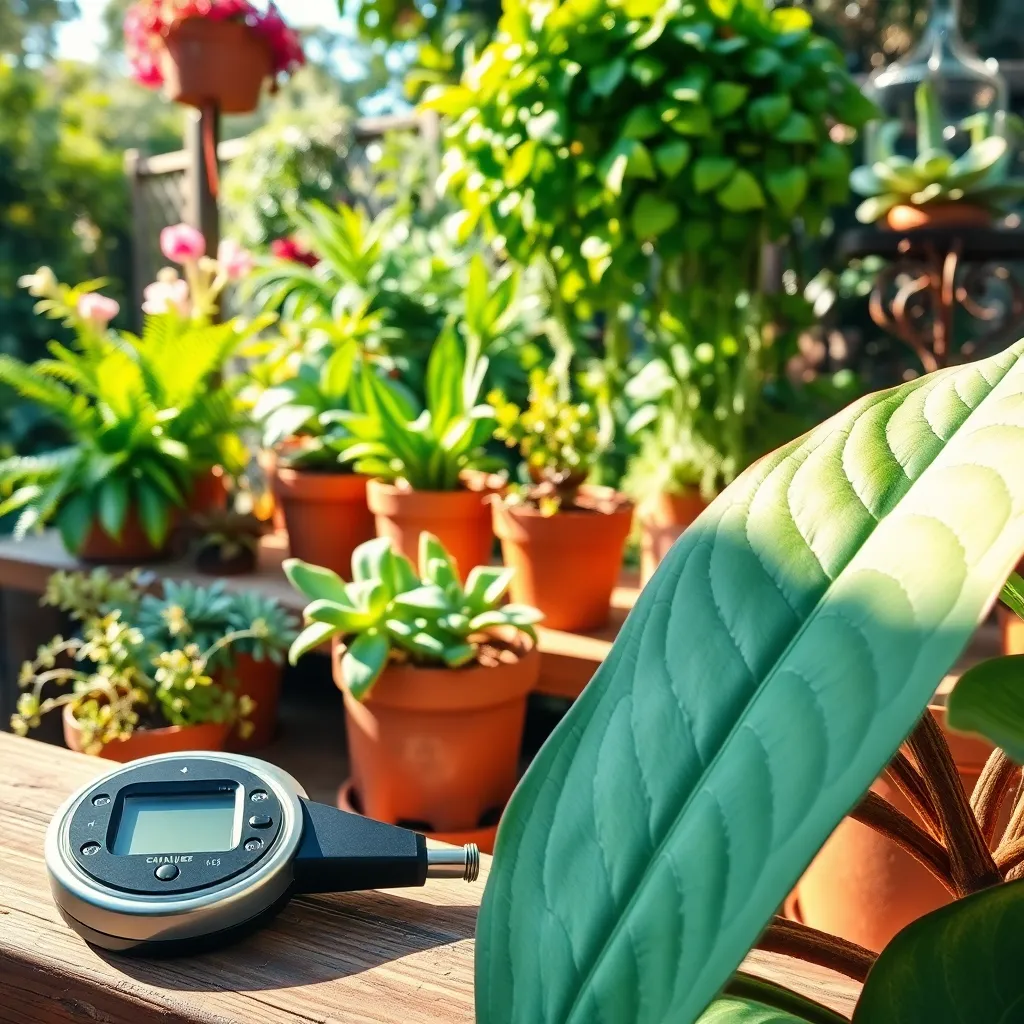
Light meters are an invaluable tool for ensuring your houseplants receive the optimal amount of light. By measuring the light intensity in specific areas of your home, you can adjust the position of your plants for better growth. Understanding your plant’s light requirements is crucial for success, as insufficient light can lead to leggy growth and poor health.
Most houseplants fall into three categories: low, medium, and high light. A light meter can help you identify the appropriate spots for each plant type, ensuring adequate light exposure. For instance, snake plants thrive in low light, while succulents prefer bright, direct sunlight. Adjusting their placement based on light meter readings maximizes their health and beauty.
For beginners, start by measuring light levels at different times of day to understand the light patterns in your home. This helps you make informed decisions about where to place each plant. Advanced gardeners can use light meters to fine-tune plant placement, ensuring each species receives its ideal light conditions year-round.
In addition to placement, consider seasonal changes in light availability. During winter months, light intensity drops, and you may need to move plants closer to windows or supplement with grow lights. Monitoring with a light meter ensures your plants’ needs are consistently met, leading to vibrant and thriving greenery.
Soil Test Kits: Monitoring Health
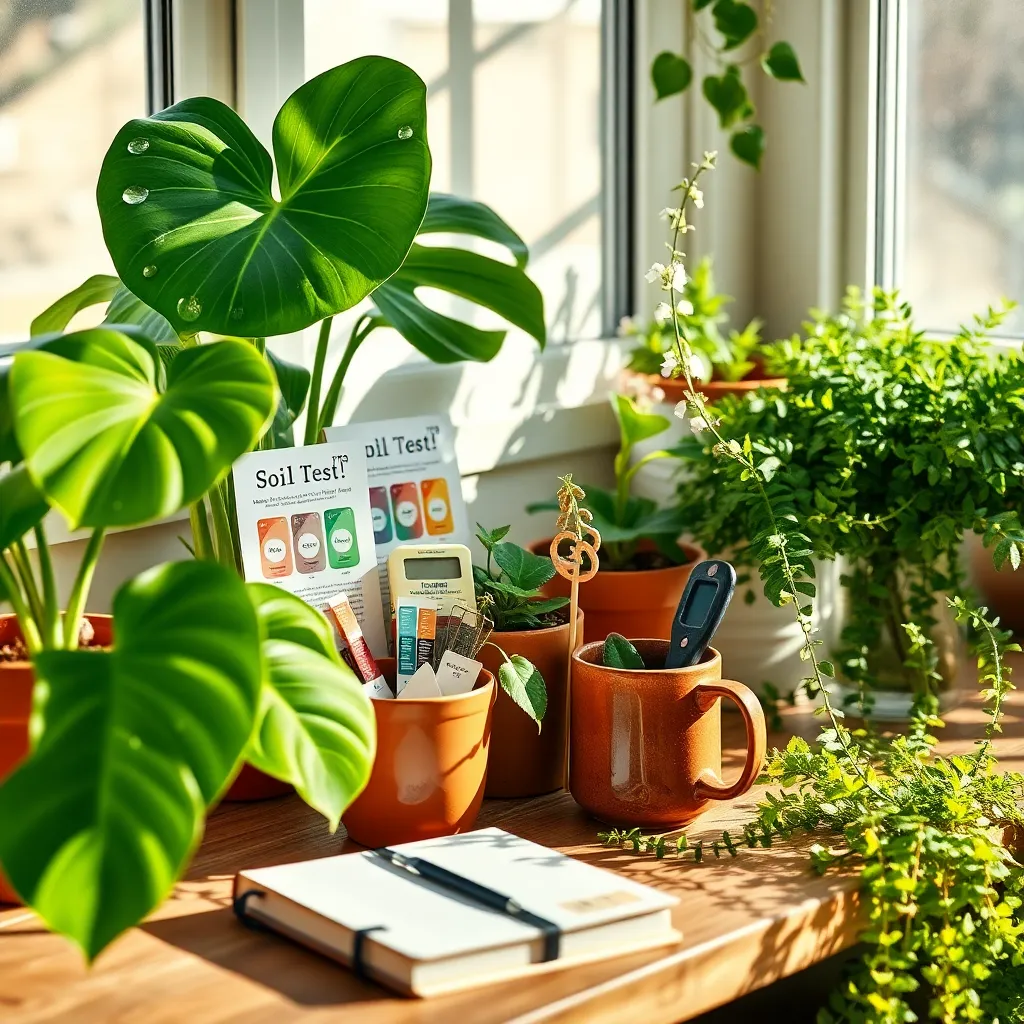
Understanding the health of your soil is crucial for thriving houseplants, and soil test kits are an excellent tool for this purpose. These kits help you determine pH levels, nutrient content, and moisture levels, providing insights into what your plants need to grow optimally.
Using a soil test kit is straightforward and can be incredibly informative. Simply take a small sample of soil from your plant’s pot, follow the instructions on the kit, and you’ll soon know if your soil requires adjustments.
A balanced soil pH is vital for nutrient uptake. Most houseplants prefer a slightly acidic to neutral pH range, typically between 6.0 and 7.0, so adjusting your soil accordingly can make a big difference in plant health.
For more advanced gardeners, consider using a kit that tests for specific nutrient levels like nitrogen, phosphorus, and potassium. By knowing the precise needs of your plants, you can tailor your fertilization routine, ensuring your houseplants receive the optimal nutrients they need to thrive.
Fertilizer Spreaders for Nutrient Boost
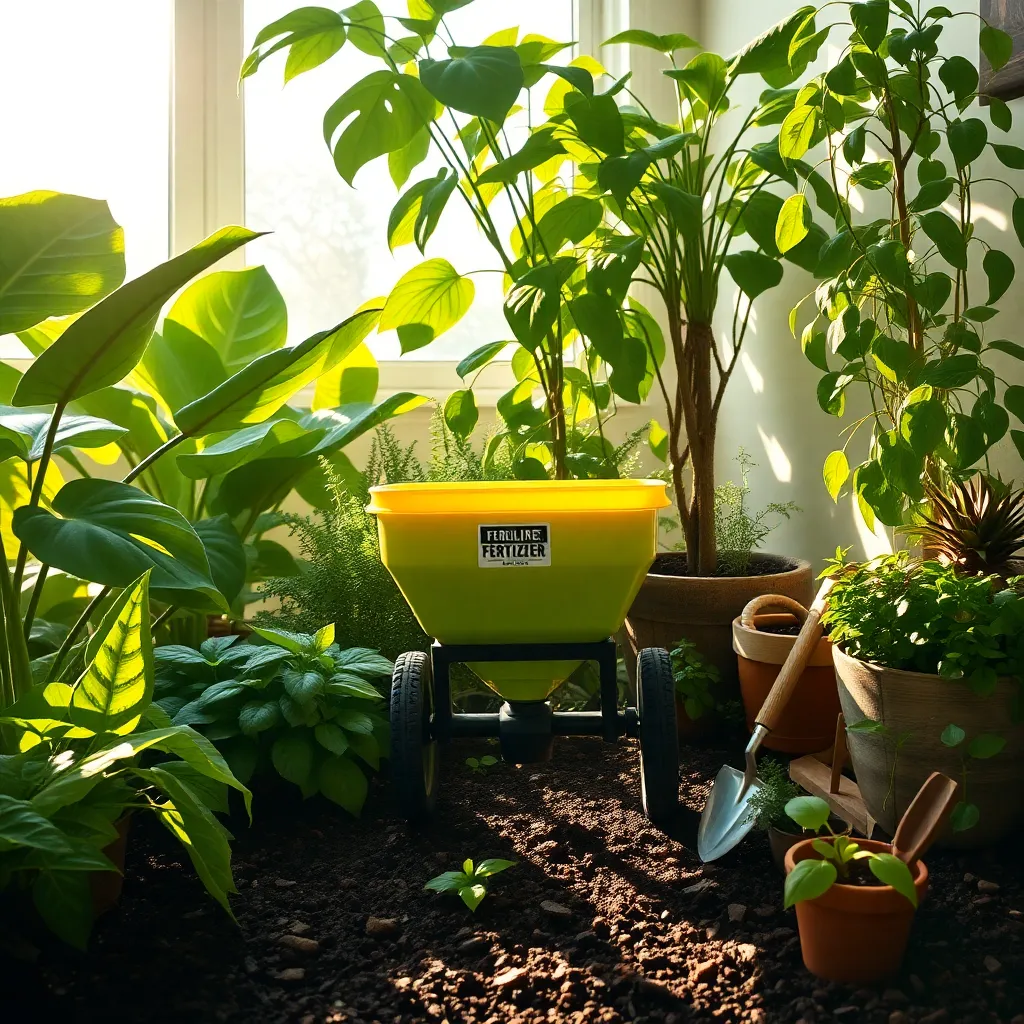
Fertilizer spreaders are essential tools for houseplant enthusiasts looking to give their indoor greenery a nutrient boost. These devices help evenly distribute granular fertilizers, ensuring that each plant receives the right amount of nutrients without any waste. For beginners, a simple handheld spreader can be effective for smaller collections of houseplants. Choose a model that is easy to handle and allows precise control over the amount of fertilizer dispensed.
Understanding when and how to fertilize your plants is crucial for their health. Most houseplants benefit from regular feeding during their active growing season, typically spring and summer. For advanced gardeners, using a spreader with adjustable settings can help tailor the nutrient delivery to suit different plant types. This customization is particularly useful for plants with specific nutrient needs, such as orchids or succulents, which may require less frequent feeding.
When using a fertilizer spreader, ensure the soil is slightly moist to help the granules dissolve and be absorbed more effectively. It’s important to follow the manufacturer’s instructions on the fertilizer packaging for application rates and frequency. Consider using organic fertilizers, which can be less likely to cause nutrient burn if applied incorrectly. Remember to clean your spreader after each use to prevent any residue buildup that might affect its performance.
For a practical approach, mix your fertilizer with an appropriate potting mix to ensure even distribution and prevent root burn. A nutrient-rich soil can complement the fertilizer’s effects, promoting robust growth and vibrant foliage. Consistent use of a fertilizer spreader can lead to healthier, more vibrant houseplants, making it a must-have tool in your houseplant care arsenal.
Repotting with Quality Trowels
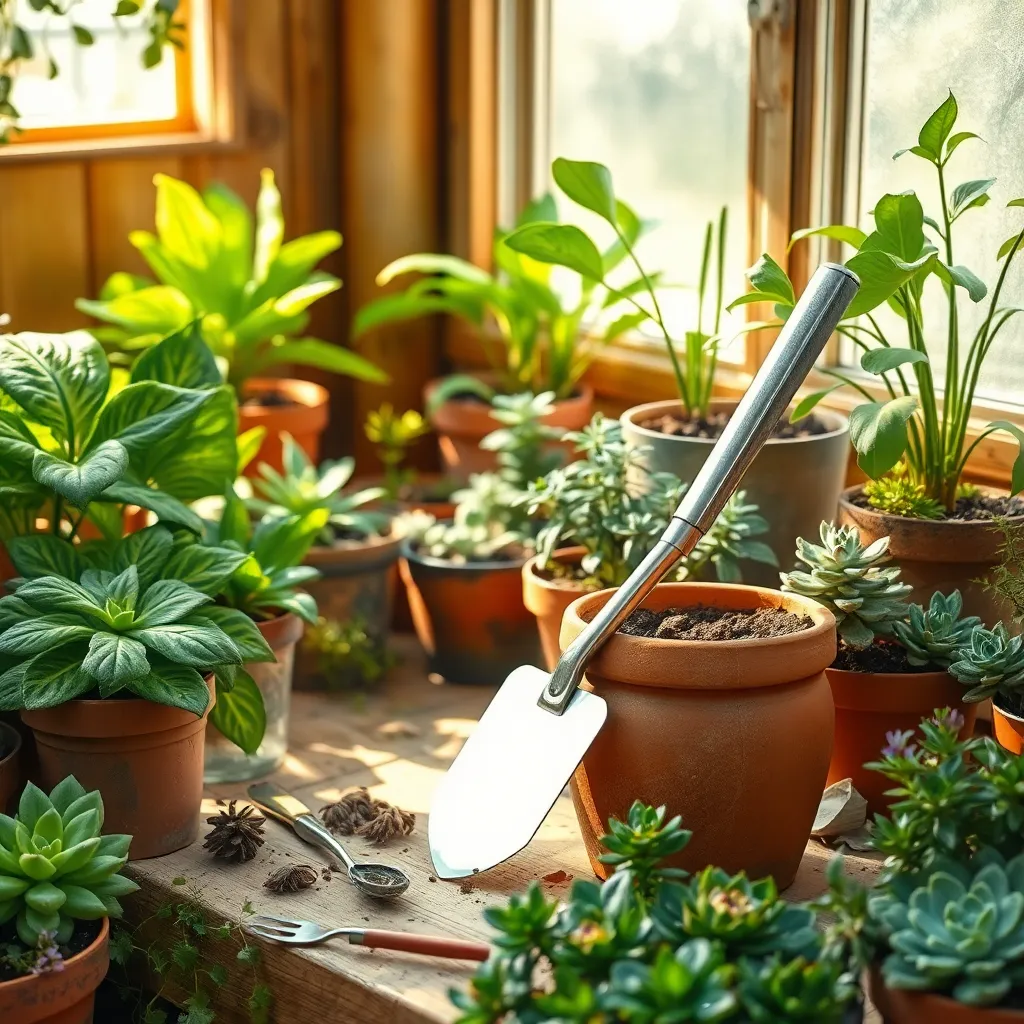
Repotting your houseplants is a crucial step in ensuring their continued growth and health. Using a quality trowel makes this task easier and more efficient, allowing you to comfortably maneuver soil and plants.
When selecting a trowel, look for one with a sturdy, ergonomic handle and a durable blade that can handle compacted soil. Beginners will appreciate a trowel with measurement markings on the blade to help gauge planting depth accurately.
To repot effectively, gently remove the plant from its current pot, being careful not to damage the roots. Use your trowel to loosen the soil and remove any dead or excess roots, ensuring the plant has ample room to grow in its new container.
Experienced gardeners might opt for a stainless steel trowel, which offers durability and resistance to rust. For heavier tasks, consider a trowel with a slightly curved blade to efficiently scoop and transfer soil.
Dusting Tools for Leaf Care
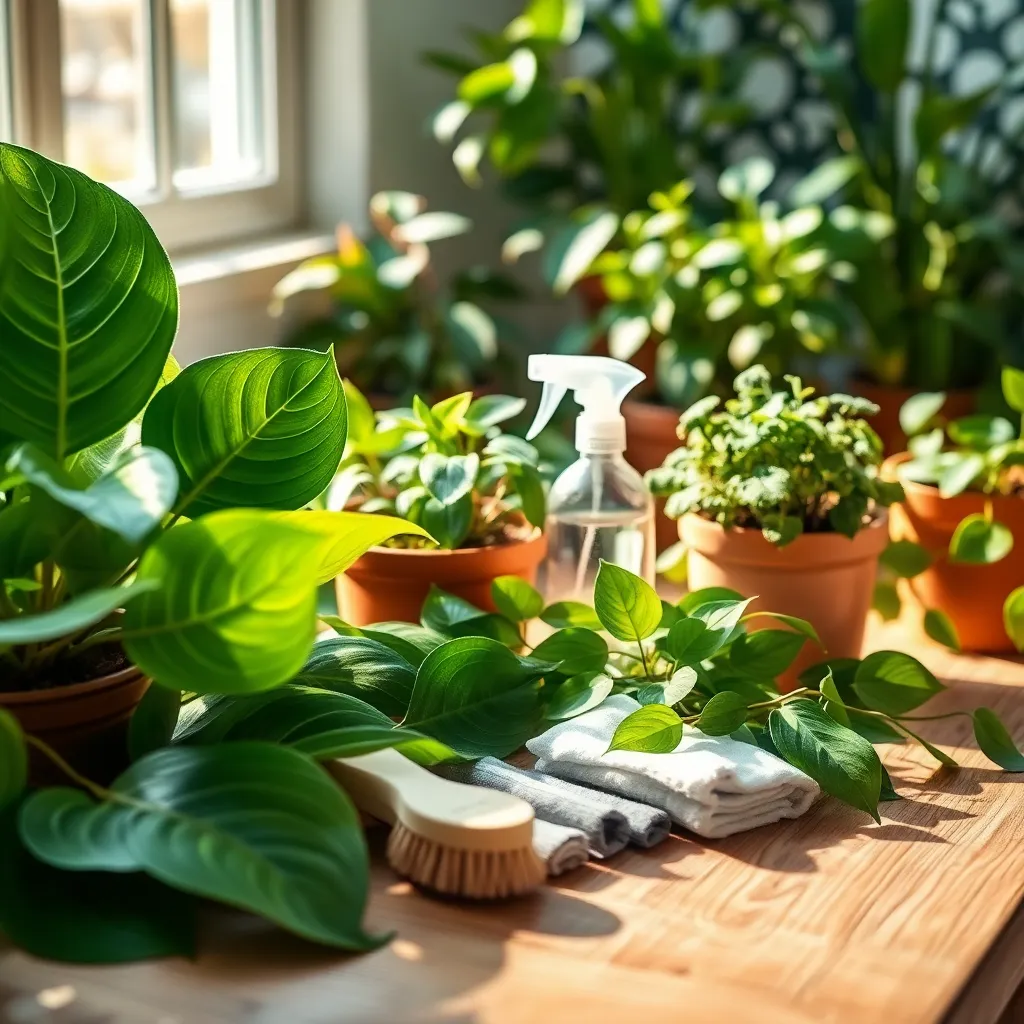
Dusting your houseplants’ leaves is an essential task that promotes their health and beauty. A layer of dust can block sunlight, reducing the plant’s ability to photosynthesize effectively.
Microfiber dusters are excellent tools for gently cleaning plant leaves without causing damage. These soft cloths can easily remove dust while preventing scratches, making them ideal for delicate foliage.
For plants with larger leaves, try using a damp cloth to wipe away dust, ensuring not to soak the leaves. It’s important to support each leaf with your hand while cleaning to avoid breakage.
Consider using a plant-specific duster for hard-to-reach areas on bushier plants. These dusters often have flexible handles, allowing you to navigate through dense foliage without disturbing the plant structure.
Pest Control Sprayers Essentials
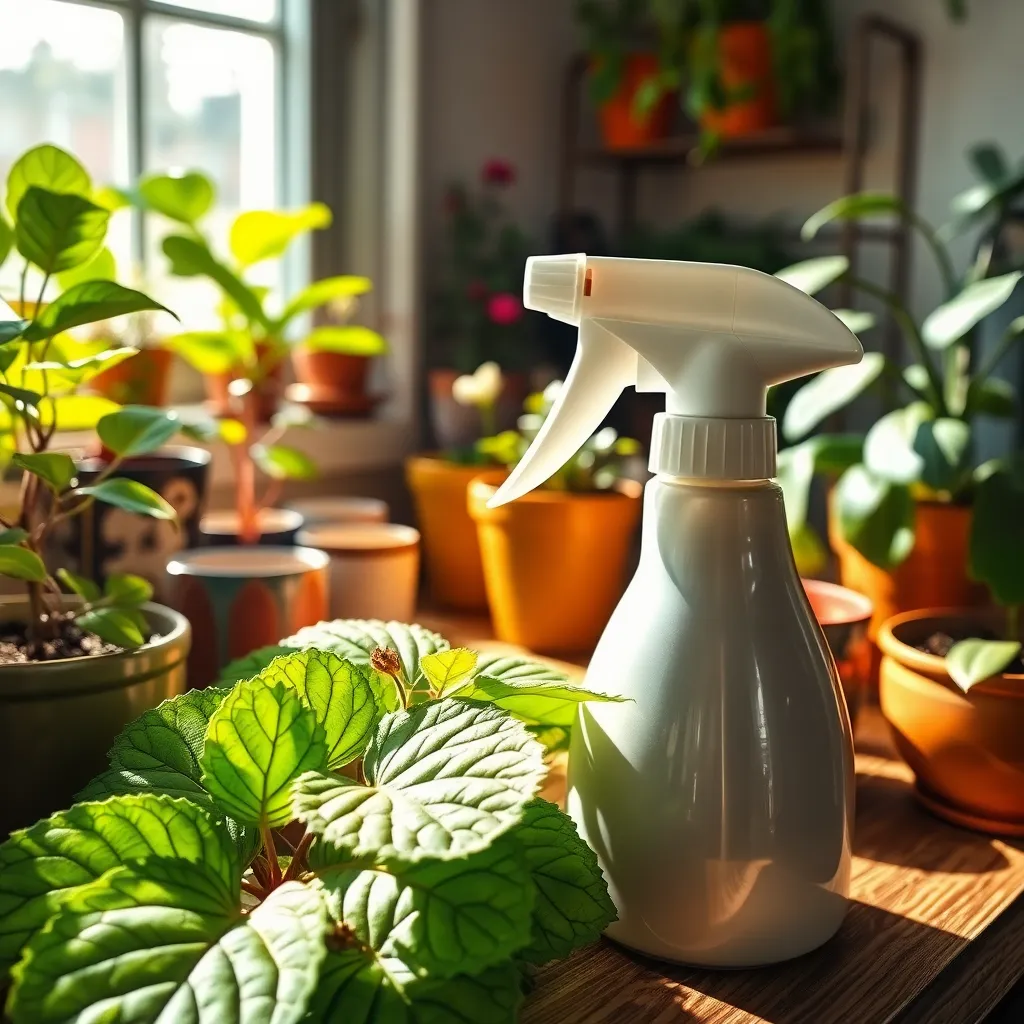
When it comes to keeping your houseplants healthy, having the right pest control sprayer is essential. These tools allow you to apply treatments precisely, ensuring that your plants get the protection they need without overexposing them to chemicals.
A simple spray bottle can be highly effective for small infestations, allowing you to target pests on leaves and stems. For larger collections of houseplants, consider a pump-action sprayer that offers more control and less hand fatigue during application.
It’s important to select a sprayer that is easy to clean to prevent cross-contamination between different treatments. Regular maintenance of your sprayer, including rinsing and drying after each use, will prolong its life and ensure consistent performance.
To enhance effectiveness, always choose the right pest control solution for your specific plant’s needs. Natural options like neem oil or insecticidal soap are often sufficient and safer for indoor use, especially in homes with pets and children.
Conclusion: Growing Success with These Plants
As we navigate the vibrant world of houseplant care, it’s clear that each tool we embrace symbolizes a deeper, nurturing connection in our relationships. From the precision of pruning shears and the nurturing nature of watering cans to the illuminating power of grow lights, each tool mirrors the attentiveness and dedication required to sustain and flourish in our bonds. Moisture meters remind us to gauge emotional climates, while fertilizer reflects the need for consistent nourishment. Humidity trays and soil testers emphasize creating the right environment, and pest control tools underscore the vigilance needed to protect what we cherish. Finally, repotting tools signify growth and transformation, essential to every thriving partnership.
Take an immediate step today: choose one relationship tool and consider how it applies to your personal bonds. Perhaps initiate a heartfelt conversation or plan a nurturing activity. By doing so, you cultivate a garden of connection and understanding.
Don’t let these insights slip away—bookmark this article to revisit these tools whenever your relationships need a gentle touch of care. Together, let’s sow the seeds of enduring relationship success, nurturing bonds that will bloom beautifully for years to come.

